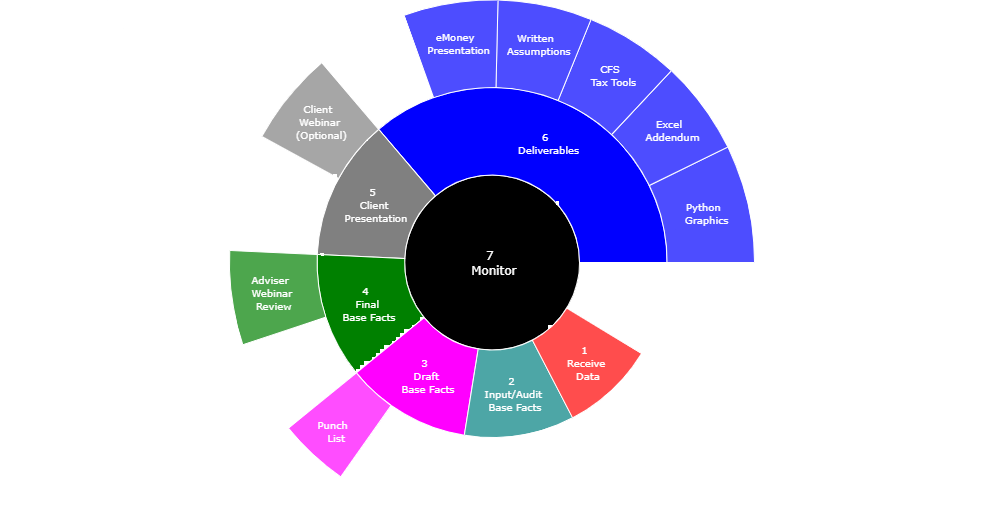As an advisor, you guide your client through the planning process.
Outsource Financial Planner assists you in the process by:
• Allow you to spend more time working in your area of core competency
• Add an experienced team member on-demand without salaries, benefits, training, etc.
• Enhance the depth of expertise you offer clients by adding a CFP® designee
• Maintain the latest financial planning software without licensing, fees, etc.
• Access our expertise in a variety of complex client planning scenarios:
- Equity compensation (restricted stock, stock options, non-qualified deferred compensation)
- Taxation: Projections and year-end planning
- Graphics to compare multiple eMoney scenarios side by side
- Pension considerations

